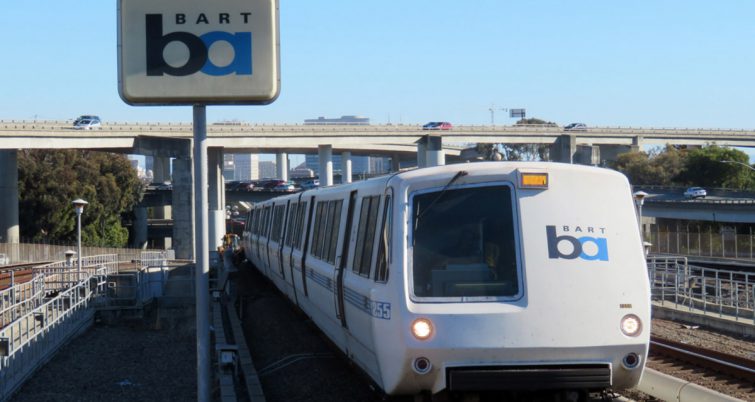BART’s capacity program faces delays from federal grant process: Officials
Written by Kyra Senese, Managing Editor
Bay Area Rapid Transit (BART) General Manager Grace Crunican is renewing a call for action to the federal government to fund the agency’s Transbay Core Capacity Program.
Officials said in a statement that the program is a package of strategic investments that would boost train frequency between San Francisco and Oakland by more than 30 percent and overall capacity by 45 percent.
The May 29 call for action came the same day that BART carried more than 10,000 additional riders between Oakland and San Francisco due to a fatal accident on the Bay Bridge, according to a statement,
“The commute that the Bay Area experienced this morning shows how one accident can impact tens of thousands of people,” Crunican said. “It’s also a reminder of the vital role BART plays in getting people across the bay.”
Crunican explained that BART is seeking long-term relief for commuters, which the transit system would be capable of accomplishing by securing federal funding.
“We can’t wait any longer, our system is already at capacity,” Crunican said.
After the program’s implementation, BART would be able to operate up to 30 ten-car trains per hour (300 cars) in each direction through the existing Transbay Tube, officials said. The transit system’s current capacity is 23 trains per hour through the tube.
306 new rail cars, a new train control system for closer headways, a new railcar storage yard, and more traction power substations are required to relieve BART’s capacity issues, according to a statement.
BART said it has lined up $2.3 billion in secured or planned local funding but is in need of $1.25 billion dollars more through a grant from the federal government. This grant funding is held up in the Federal Transit Administration’s (FTA) Capital Investment Grants Program.
“BART has secured local and state funding for the project,” Crunican said. “BART District voters approved money for core capacity when they passed Measure RR. BART riders are contributing money to the project through their fares. Now it’s up to the federal government to do its part and take action.”
BART is ready to move this project into the engineering phase, however, officials said the transit system cannot do so without the FTA’s assistance. The project has been delayed by the FTA for more than a year, and BART said it estimates that every year of delay will cost taxpayers about $120 million annually.
California’s U.S. Sens. Dianne Feinstein and Kamala Harris, as well as seven U.S. Representatives from the Bay Area, recently wrote to U.S. Transportation Secretary Elaine Chao in support of the project. They asked the FTA to move the project forward: “It is our understanding that BART’s Transbay Corridor Core Capacity project has satisfied all the requirements laid out in statute for advancement and has even received the highest possible technical rating – the only project in the program’s pipeline to do so,” they wrote.
BART carries up to 28,000 people per hour during the commute under the bay each weekday, the transit system said.





